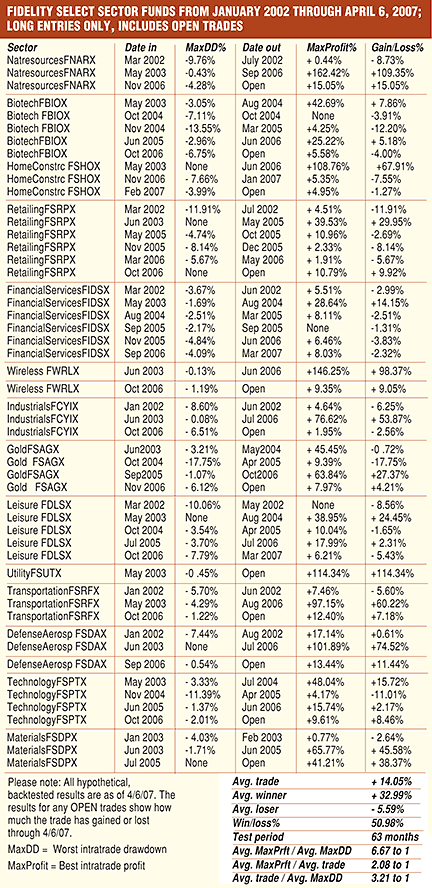The Keys To Trend-Following
Successful trend-following requires time, patience, an unshakable belief in the power of statistics, and, above all, the willingness to fearlessly seize prime trading opportunities.
IT can be a challenge to time the markets on a short-term basis, yet that seems to be the driving motive behind the marketing of most trading systems, charting packages, and stock/option newsletters. This article provides a simple framework around which technicians could build a simple and profitable trend-following method. Weekly trend-following takes a longer-term approach, allowing fundamental supply/demand forces to create opportune, low-risk technical entry points.
TREND-FOLLOWING ESSENTIALS
When a stock, fund, exchange traded fund (ETF), or commodity breaks out or develops other characteristics that imply a major trend confirmation, the smart money will initiate positions once the move is already under way, following the emerging trend. It is the opposite strategy of those traders who (sometimes unwisely) attempt to pick tops and bottoms or attempt to predict market reversal points. Trend-following will never get you in at the beginning of a market move, but it does ensure that the market will already be moving in the desired direction before you invest your trading capital.
The goal of the successful trend-follower is to profit from the primary thrust of every sustained long-term trend movement. If such traders can keep the losses on their losing trades small, they can still enjoy worthwhile profits over time.
COVER ALL BASES
The world we live in is an unpredictable place, where even top economists and financial analysts don't know what will happen next. Nor do they know the exact timing of supposedly seasonal events. Did anyone realize ahead of time that the NASDAQ would lose nearly 80% of its value in three years? Could they foretell all of the famines, natural disasters, and economic crisis events years before the events occurred? Not likely, which is why trend-followers are always prepared to take action when a significant market move indicates (via their chosen technical method) that an entry is warranted.
When a natural disaster or economic tremor suddenly propels grain, oil, interest rates, or the Standard & Poor's 500 up or down, the trend-followers engage the new trend until they get the signal that the move is over. Sometimes they get stopped out for a modest loss. Other times they make a few percentage points and get out when the trend fizzles. Eventually, they catch the start of a major move, riding it for all it is worth. And that's where they earn the cash that keeps them profitable over the long haul.
Since the future is unknowable, trend-followers ensure that they always follow a range of diversified, noncorrelated markets. If silver is simply consolidating without any trend, they shun that market. But perhaps the health-care sector is starting to break to the upside and the energy sector is breaking hard to the downside. Those two sectors are where trend-followers want to consider initiating a suitable trend-following entry point. They shun the nontrending (cycling, whipsawing, or low-volatility dead markets) and look for the emerging signs of trending moves.
In this article, I will focus on sector-based mutual funds. Diversifying across these funds ensures that we'll be able to latch onto the start of a trend in some sector or market when it occurs. I have included the five-year, backtested results of a simple trend-following framework on a diverse mix of Fidelity sector funds, which proves the strength of this framework (Figure 1).

...Continued in the November issue of Technical Analysis of STOCKS
& COMMODITIES
Excerpted from an article originally published in the November 2008 issue of Technical Analysis of STOCKS & COMMODITIES magazine. All rights reserved. © Copyright
2008, Technical Analysis, Inc.
Return to November 2008 Contents